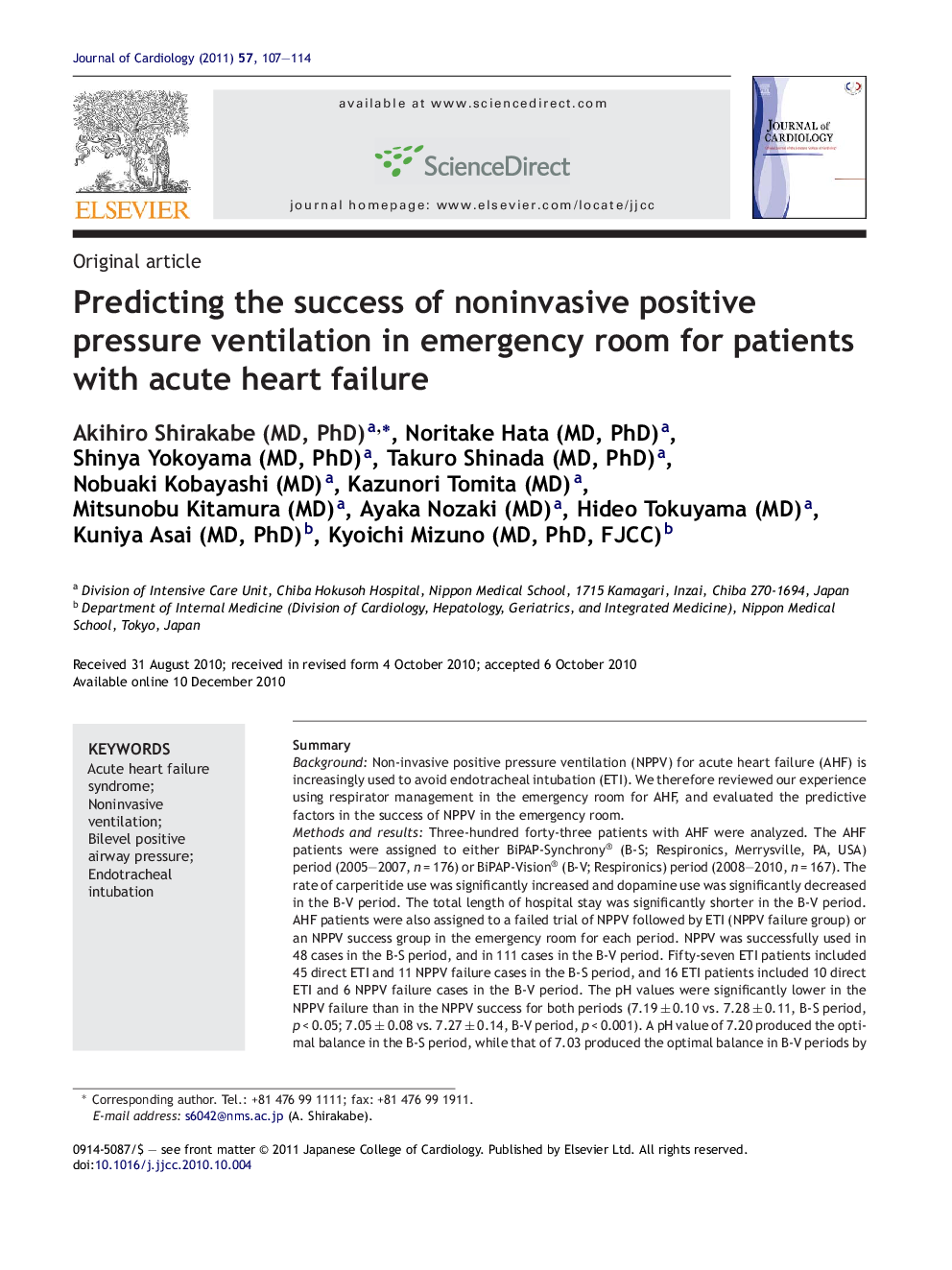| Article ID | Journal | Published Year | Pages | File Type |
|---|---|---|---|---|
| 2963460 | Journal of Cardiology | 2011 | 8 Pages |
SummaryBackgroundNon-invasive positive pressure ventilation (NPPV) for acute heart failure (AHF) is increasingly used to avoid endotracheal intubation (ETI). We therefore reviewed our experience using respirator management in the emergency room for AHF, and evaluated the predictive factors in the success of NPPV in the emergency room.Methods and resultsThree-hundred forty-three patients with AHF were analyzed. The AHF patients were assigned to either BiPAP-Synchrony® (B-S; Respironics, Merrysville, PA, USA) period (2005–2007, n = 176) or BiPAP-Vision® (B-V; Respironics) period (2008–2010, n = 167). The rate of carperitide use was significantly increased and dopamine use was significantly decreased in the B-V period. The total length of hospital stay was significantly shorter in the B-V period. AHF patients were also assigned to a failed trial of NPPV followed by ETI (NPPV failure group) or an NPPV success group in the emergency room for each period. NPPV was successfully used in 48 cases in the B-S period, and in 111 cases in the B-V period. Fifty-seven ETI patients included 45 direct ETI and 11 NPPV failure cases in the B-S period, and 16 ETI patients included 10 direct ETI and 6 NPPV failure cases in the B-V period. The pH values were significantly lower in the NPPV failure than in the NPPV success for both periods (7.19 ± 0.10 vs. 7.28 ± 0.11, B-S period, p < 0.05; 7.05 ± 0.08 vs. 7.27 ± 0.14, B-V period, p < 0.001). A pH value of 7.20 produced the optimal balance in the B-S period, while that of 7.03 produced the optimal balance in B-V periods by the ROC curve analysis. The cutoff value of pH was lower in the B-V period than in the B-S period.ConclusionsThis predictive value provides successful estimates of NPPV with a high sensitivity and specificity, and the aortic blood gas level was above 7.03 pH when using the B-V system.
